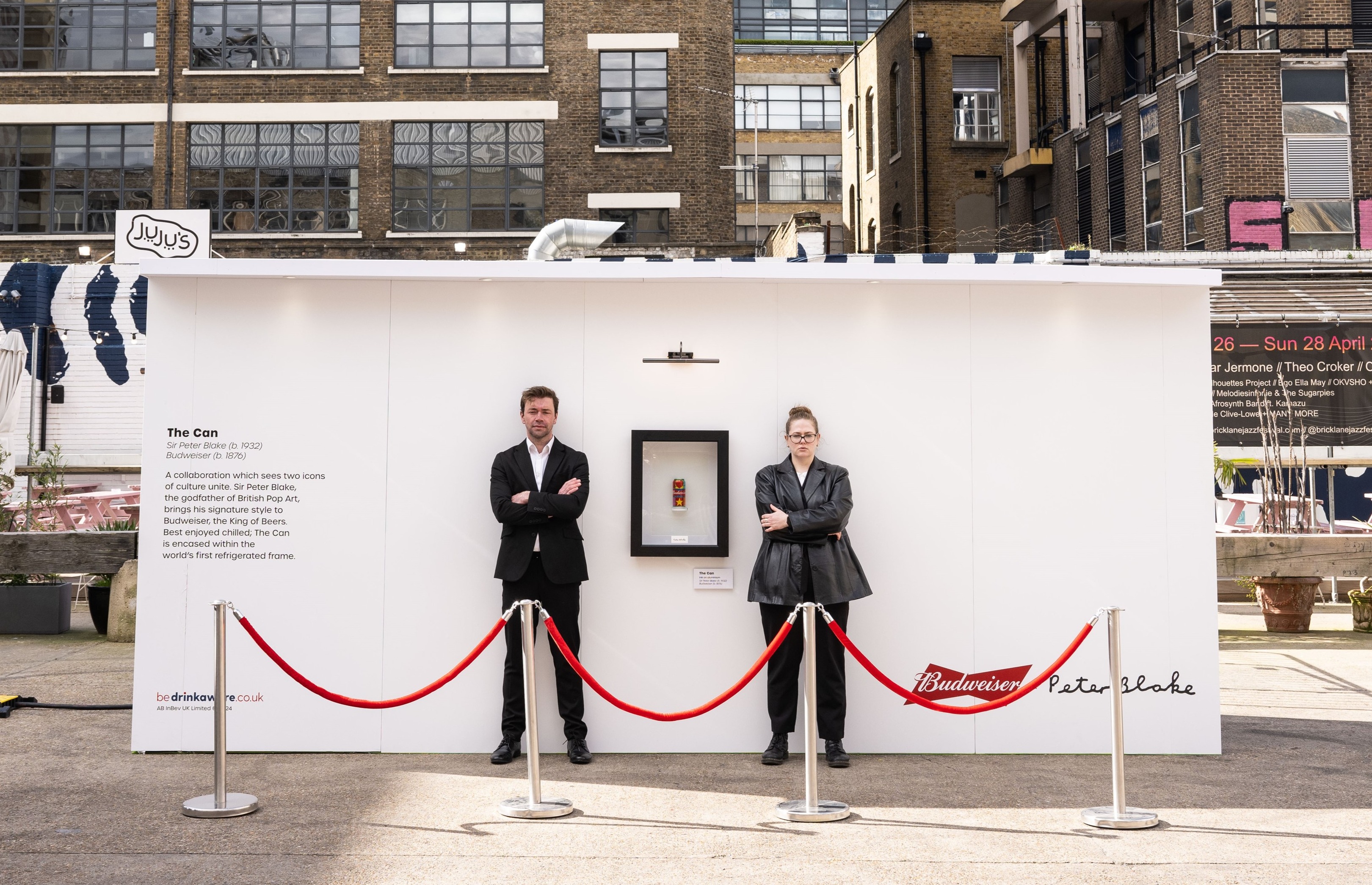
Flying High: Navigating the Launch of Riyadh Air.

When a launch becomes a beacon of national pride, the pressure is on to deliver world class communications.
Overview.
In the dynamic landscape of global aviation, the launch of Riyadh Air, Saudi Arabia's new national airline, was not merely a milestone; it was a beacon of royal ambition and national pride. It was a strategic move in the bid to show that Saudi is about more than oil, that it is a Kingdom rich in heritage and tradition and one that wanted to show the world its hospitality.
Against this backdrop the airline became more than an aviation story. It held the promise of transforming the Kingdom's tourism industry and elevating its global stature.
So, when tasked with delivering a campaign worthy of the tagline ‘the future of flight’, how did we use strategic communications to keep calm, carry on and send it soaring sky high?
The Challenge.
The Arab Peninsula boasts formidable airlines with extensive global reach, including Emirates Airways, Qatar Airways, and Saudia. Against this backdrop, the question loomed: Why launch another airline in a market seemingly saturated with options?
The challenges were not only competitive; they were existential. At the 2023 Paris Air Show - the marquee event to launch to the aviation industry - Riyadh Air stood as a brand without a tangible product: no fleet, cabin interior, uniform, or inflight entertainment schedule yet in place.
With the commercial launch in 2025, we faced the daunting task of building anticipation and credibility from scratch.
Armed with a Boeing 787-9 Dreamliner adorned in the airline's inaugural lavender and indigo livery, a visionary leadership team, and a clear strategy to engage media we embraced the challenges.

The Insight.
In crafting the launch narrative we mined numerous data points for insights. What we found became the bedrock of the narrative. These insights not only highlighted the untapped potential of the Saudi Arabian market but also underpinned the strategic imperative for Riyadh Air's existence.
- Geographic Advantage: The Saudi landmass, comparable to half the size of Western Europe, presented a unique opportunity. The distance between major cities like Riyadh and Jeddah, akin to the distance between London and Rome, highlighted the demand for an international carrier based in the city of Riyadh – the business capital of the Kingdom.
- Global hub: The revelation that 90% of air traffic to Riyadh comprised point-to-point travel suggested a significant opportunity for tourism growth and global connectivity. With 60% of the world's population within an 8-hour flight radius of the capital Riyadh, the strategic positioning of the airline as a hub provided another point of difference.
- Governmental Support and Reform Agenda: Crucially, Riyadh Air's launch was a key part of the wider government agenda for global tourism and business. This alignment was a powerful driver of credibility and broadened the story to include the commitment to economic growth and cultural exchange.
Soft power: Saudi Arabia flexes muscles with launch of new Gulf airline Riyadh Air.
Headline, The Guardian
We crystalised these insights into one organising principle: the brand was Riyadh - the business opportunities, the tourism hub, the heart of Arabia and all its mystery and heritage.
Riyadh Air was the global manifestation of the city itself and by extension the Kingdom. The flight would be more than a means of travel, it was a little piece of the Riyadh experience in the sky.
This provided a strong platform for media engagement by positioning the launch as the centrepiece for Saudi’s ambition.
Saudi Arabia's Ambitious New Airline Makes Debut At Paris Air Show.
Headline, Forbes
Preview & Release Strategy.
Engaging the aviation media was a strategic imperative, however the global news media would be powerful advocates if we engaged them from an early stage. It would help to assuage some of the concerns that could arise by allowing them to ask the difficult questions and learn about where the airline fitted into the wider reforms of Saudi Arabia.
We agreed upon a ‘preview and release’ strategy which would allow us to tease updates without having to reveal the finished product. Essentially, we could kick off with ambition and then tease each development followed by the reveal when it was ready.
The benefit of this strategy was clear; we weren’t beholden to external parties, such as Boeing. Instead we could tell the story we wanted to tell at times we wanted to tell it.

Earned Media Strategy.
An airline has a variety of narrative channels by default.
What’s under the hood:
- the technical specification of the aircraft.
- the engine partners.
- the fleet size.
- the type of aircraft (narrow/wide body).
- the livery.
The experience:
- the flight routes.
- the interior detail of the cabin, how it looks and feels, the colours.
- the cuisine.
- the in-flight entertainment product.
- the cabin classes.
- the staff fashion.
There is a plethora of stories to tell over time.
This variety means that there are also many verticals in the media to engage and keep momentum high. The strategy, therefore, helped us to keep the news stream running in the absence of the physical fleet and commercial flight availability.
With this in mind, the launch needed to meet the standards of hospitality and service the airline and the Kingdom would show to the world. To give gravity, we had to ensure the CEO was there to present the new brand and speak to media with a talk track detailing the major USPs of the airline.
Airlines that don't take climate-change seriously will fail, says British CEO of new Saudi Arabian carrier Riyadh Air.
Headline, Mail Online
The Indigo Hour.
Drawing on the unusual livery colour, and to lock in the association of the colour with the airline we hosted a press reception the evening before the Paris Air Show began. (Once the show began it would be more of a challenge to corral all the C-level execs and media.) But with at least three other major events happening that evening we had to make sure ours was the hottest ticket in town.
Le Crillon is one of Paris’s most prestigious hotels. Built in 1758 on Place de la Concorde and commissioned by Louis XV, it is steeped in luxury and heritage and mixes this with contemporary details and design. It was the perfect partner for Riyadh Air, a brand that promised a new luxury for the modern age of flight, driven by the heritage of the Kingdom of Saudi Arabia.
The CEO would be available to all media. The accessibility of the man behind the airline was imperative to demonstrate a willingness to be transparent and to talk to all media from The Economist to a single person blog.
Every detail had to reflect the customer service promise of welcome hospitality, so there was no room for elitism. We knew that this would make media interview planning a logistical marathon, but we had allowed additional space if needed.

- 7%
- Share of voice.
- 100,000
- Global media mentions.
Results & Learnings.
From a standing start Riyadh Air burst onto the global aviation stage with a significant impact:
- we secured a 7% share of voice in the competitive set including the other leading Middle East airlines.
- 10,000 mentions in global media.
- all coverage landed at least two of the five key messages, securing its position as digitally native disruptor, an airline for modern times aware of its responsibility to be climate conscious, and a gateway to Saudi and the world.
- on days one and two of the Paris Air Show, Riyadh Air was the most talked about airline in media reporting on the event.
Riyadh Air: Does Saudi Arabia Want To Have The Next Emirates?
Headline, Simple Flying
It was standing room only at the Indigo Hour press event, akin to a celebrity media junket. Our goal had been 30 attending journalists, we surpassed this by 144% with a total of 43 media from 32 publications.
- 1000 media reports on the Indigo Hour event featuring interviews or soundbites from the CEO Tony Douglas.
- 70% positive sentiment (neutral sentiment made up the remaining 30%).
- 40 media briefings with Tony Douglas on the evening.
The volume and quality of positive press coverage far exceeded the client’s expectations and enabled us to build genuine media allies to support the evolution of the brand. Since the Paris Air Show Riyadh Air has continued to use the Preview and Release strategy at the Dubai Air Show, the World Travel Market and through a series of product reveals.
The sentiment of the coverage attests to the impact the brand made, being described as a ‘super aggressive’ by the Financial Times and as a climate aware airline in Reuters which was syndicated globally.

Share
Riyadh Air: Navigating the launch of a new airline.
In the dynamic landscape of global aviation, the launch of Riyadh Air, Saudi Arabia's new national airline, was not merely a milestone; it was a beacon of royal ambition and national pride.
Business Objectives
Disciplines
Sector
Users who viewed this work also looked at:







